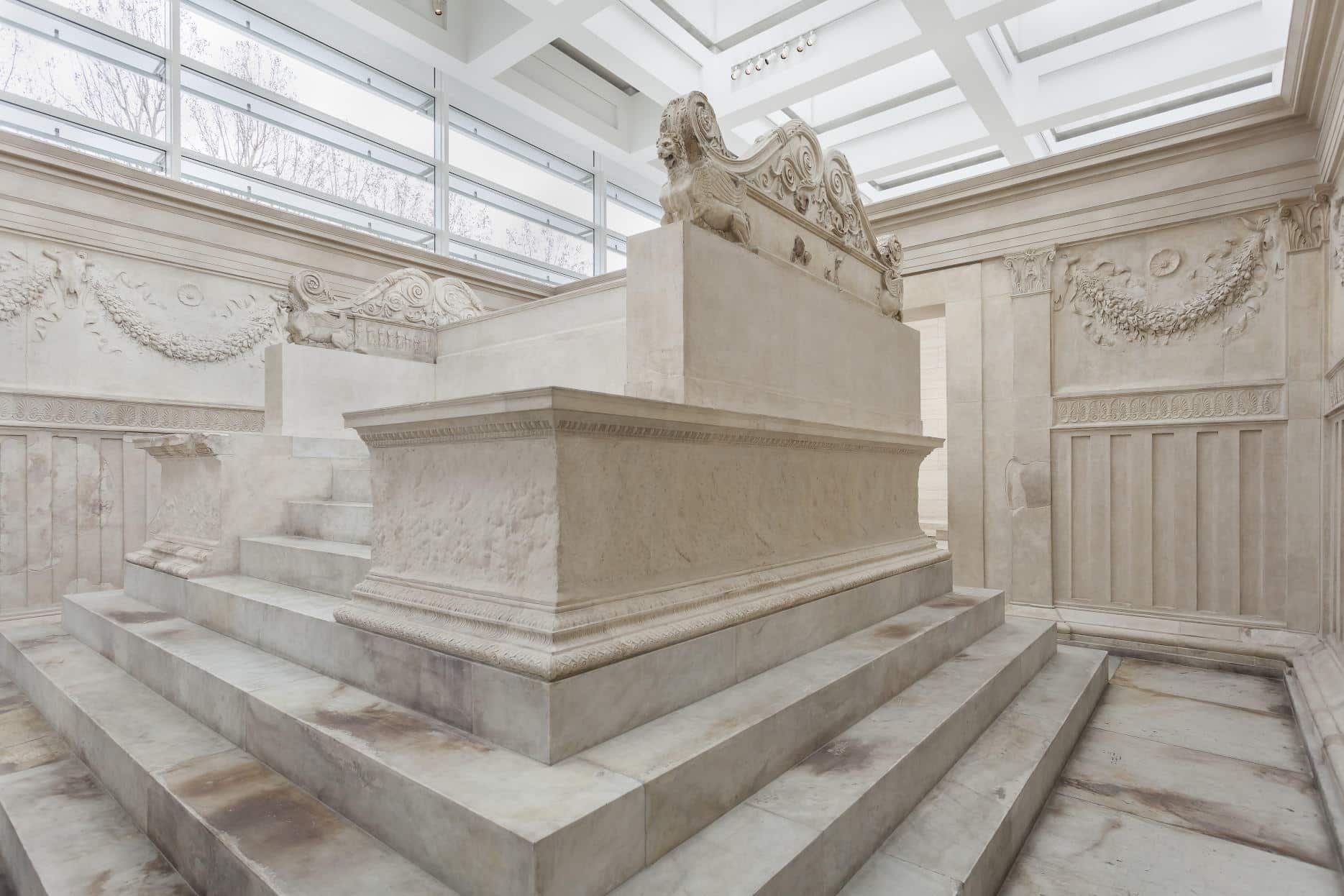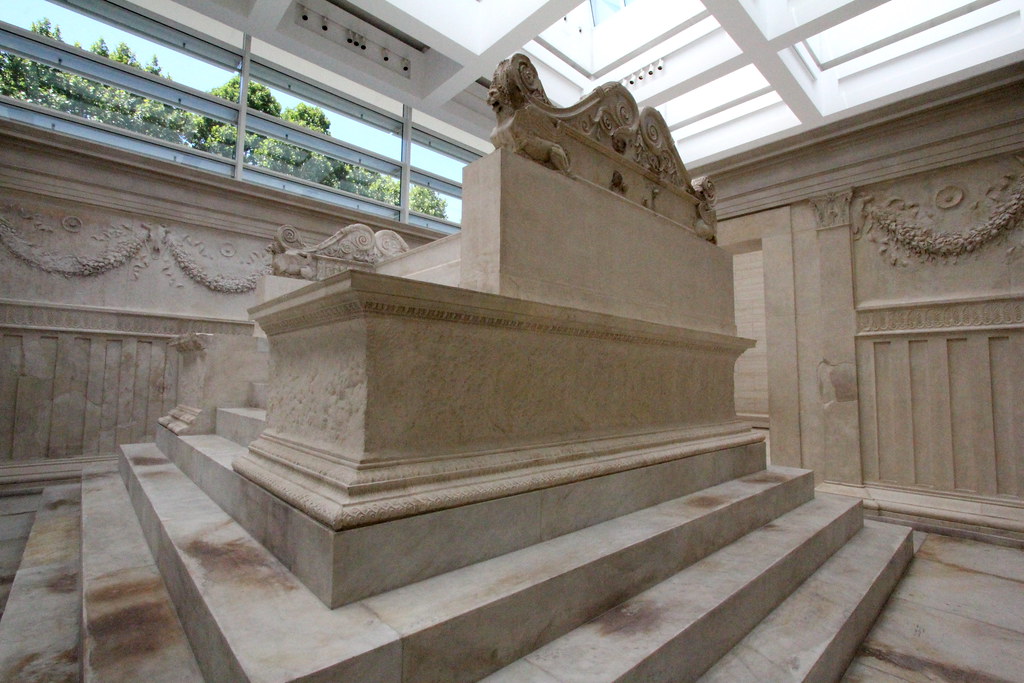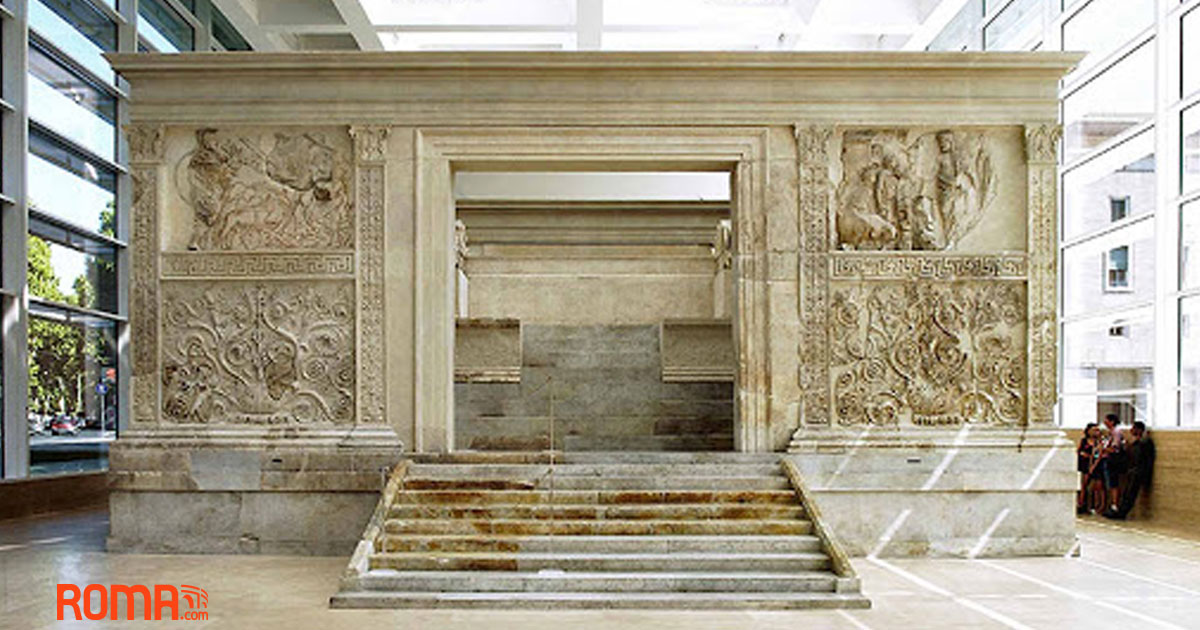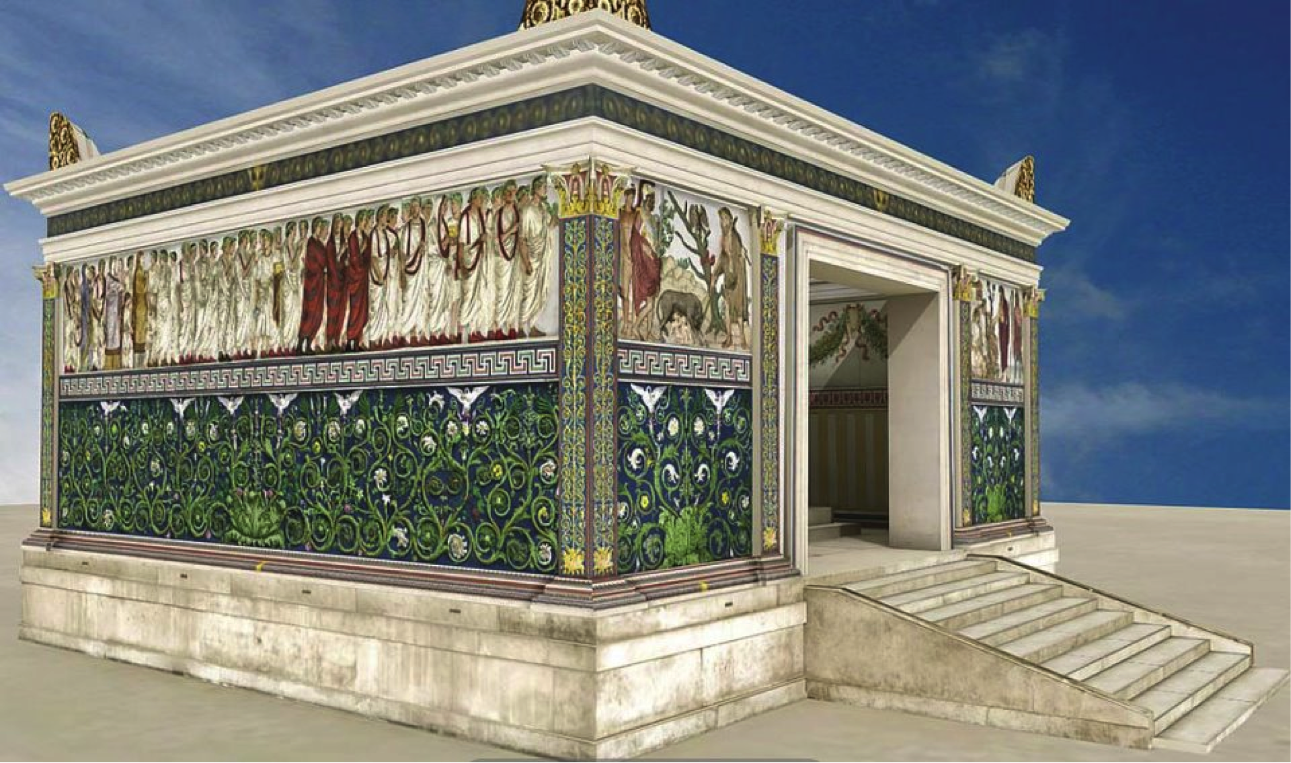
Ara Pacis Augustae. Built in 1st century BC to celebrate the return of
The Ara Pacis Augustae (Latin, "Altar of Augustan Peace"; commonly shortened to Ara Pacis) is an altar in Rome dedicated to the Pax Romana. The monument was commissioned by the Roman Senate on July 4, 13 BC to honour the return of Augustus to Rome after three years in Hispania and Gaul and consecrated on January 30, 9 BC. Originally located on the northern outskirts of Rome, a Roman mile from.

Ara Pacis Colosseum Rome Tickets
The Ara Pacis is composed of an enclosure which includes the Mensa (sacrificial table) , the altar on which the animal remains and wine were offered.. The Mensa occupies almost entirely the space inside the enclosure, from which it is separated by a narrow corridor whose floor is slightly inclined towards the outside, in such a way as to facilitate the escape of water, both rainwater and that.
I Viaggi di Raffaella Roma l'Ara Pacis
The Ara Pacis (Latin, " Altar of Peace ") is an altar in Rome dedicated to peace. The personification of peace is depicted as the Roman goddess Pax. The Ara Pacis was dedicated on January 30 in 9 BC, the birthday of Augustus his wife Livia. It is also referred to as the Ara Pacis Augustae (" Altar of Augustan Peace ") because it prompted the.

Ara Pacis, inside the altar Leon Reed Flickr
The Huntsville office team uses creativity and innovation to protect the lives of our Warfighters. This office features state-of-the art capabilities in engineering, welding and machining, fabrication, painting, sewing, composites and chemistry labs to build specialized prototype systems. We are part of the ARA team solving problems of global.

L'Ara Pacis, come non l'avete vista mai. Spettacolo di luci e colori, a
Ara Pacis, shrine consisting of a marble altar in a walled enclosure erected in Rome's Campus Martius (Field of Mars) in honour of the emperor Augustus and dedicated on Jan. 30, 9 bce.The dedication was recorded in Ovid's Fasti as well as by Augustus himself in his "Res Gestae Divi Augusti" ("Achievements of the Divine Augustus").. The structure was commissioned in 13 bce to.

Ara Pacis, la grande inaugurazione dell’altare per la pace romana
Ara Pacis (Augustae), (Latin: "Augustan Altar of Peace") State monument built by Caesar Augustus in Rome's Campus Martius (13-9 bc) to commemorate his victorious return from Spain and Gaul.It consists of an altar on a podium enclosed by walls. Its lavish sculptural decoration is among the finest examples of Roman art; reliefs representing the ceremonial procession at the altar's.

Ara Pacis Augustae, vista sull'altare Ancient Rome, Ancient Art, Well
Front - original west face. Reconstruction: The sacrificial altar is the center-piece of the entire Ara Pacis Augustae, yet much of its form and size is necessarily speculative. Very few original parts had survived so that when the archaeologists reconstructed it in 1938 much of its size and shape had to be imagined.

Ara Pacis, Roma, guida completa orari, biglietti, storia, cosa sapere.
The Ara Pacis is a commemorative monument that was built between the years 13 and 9 B.C. to celebrate peace in the Mediterranean after the victorious battles of Emperor Augustus in Hispania and Gaul. The Ara Pacis is an altar located in the interior of a closed structure carved in Carrara marble. It stands out because of its impressive.

Ara Pacis Rome Autel de la Paix Empereur Auguste Rome Italie
to bring the Ara Pacis so impressively back to life. The Ara Pacis Augustae (Altar of Augustan Peace), known as the "Ara Pacis", is a world famous Roman monument housed in a new museum opened in 2006, the Museo dell'Ara Pacis. The Ara Pacis has undergone extensive changes since first constructed in 13-9 BCE during the reign of Augustus.

Reconstruction of the Altar of Augustan Peace (Ara Pacis). Rome, Museum
Welcome to my first video tour with voiceover narration!This video is about the most famous, prominent and beautiful monuments of ancient Rome - Ara Pacis, o.

ARA PACIS
The Ara Pacis is, at its simplest, an open-air altar for blood sacrifice associated with the Roman state religion. The ritual slaughtering and offering of animals in Roman religion was routine, and such rites usually took place outdoors. The placement of the Ara Pacis in the Campus Martius (Field of Mars) along the Via Lata (now the Via del.

Aryan Culture The Augustan Altar of Peace in Rome National Vanguard
Our Mission. World History Publishing is a non-profit company registered in the United Kingdom. World History Foundation is a non-profit organization registered in Canada. We care about our planet! We contribute a share of our revenue to remove carbon from the atmosphere.

Ara Pacis Augustae e la teca di Meier • Cosa Vedere a Roma
Uncategorized. The Ara Pacis Augustae or Altar of Peace was built to celebrate the return of Augustus from his campaigns in Spain and Gaul. The marble structure is a masterpiece of Roman sculpture. Built in: 9 a.C. Built by: Senato Romano. Location: Lungotevere in Augusta. The Ara Pacis is an exciting example of Roman sculpture in the early times.
I Viaggi di Raffaella Roma l'Ara Pacis
It could perhaps be argued that the Ara Pacis Augustae—the Altar of Augustan Peace—represents in luxurious, stately microcosm the practices of the Roman state religion in a way that is simultaneously elegant and pragmatic. Portrait of Augustus as Pontifex Maximus from the Via Labicana, after 12 B.C.E. (Palazzo Massimo alle Terme, Rome.

L'Ara Pacis
The Ara Pacis, or Altar of Peace, is one of Ancient Rome's most significant monuments. Built in the 1st century BC, this 2,000 year old altar symbolizes the peace and prosperity of Emperor Augustus's reign. When the Roman Senate commissioned the Ara Pacis, Augustus had triumphantly returned from conquering Spain and Gaul.

ANCIENT ART — Ara Pacis Augustae (“Altar of Augustan Peace”),...
The Ara Pacis Augustae or Altar of the Augustan Peace in Rome was built to celebrate the return of Augustus in 13 BCE from his campaigns in Spain and Gaul.The marble structure, which once stood on the Campus Martius, is a masterpiece of Roman sculpture and, in particular, of portraiture. Senators, officials and the Imperial family are depicted on the wall reliefs of the monument in an animated.